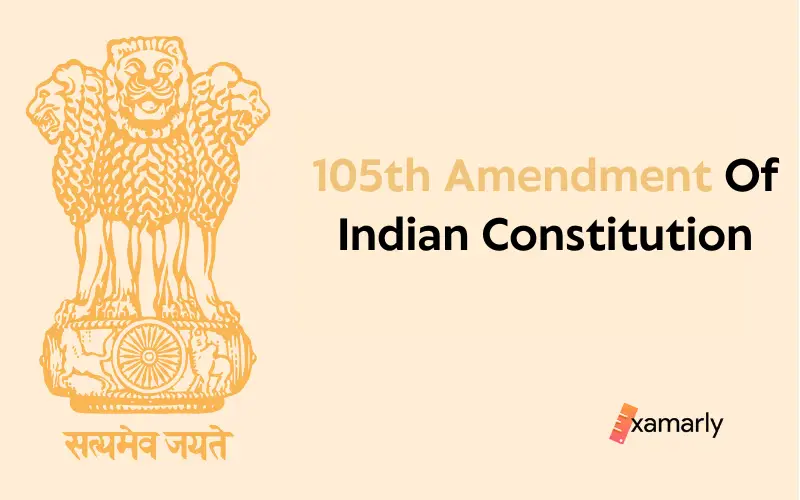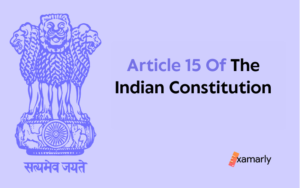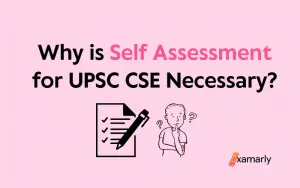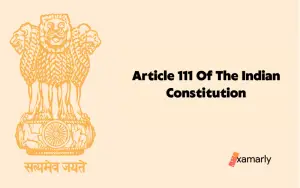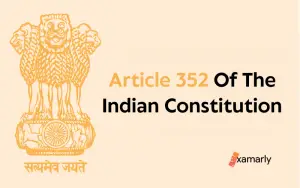The 105th Amendment Of Indian constitution restored state governments’ authority to recognize economically and socially disadvantaged groups (SEBCs). A community for which the State in India may give “special provisions” or equality is classified as SEBCs, which contains the categories generally referred to as Other Backward Classes (OBCs).
The Supreme Court ruled that the separate State lists were exempt from the authority and obligations of the National Commission for Backward Classes. State governments’ ability to create the Socially and Educationally Backward Classes (SEBC) list was reinstated by the 105th Amendment of Indian constitution. It said that States are exempt from the National Commission’s requirement for consultation.
Background
- Based upon the recommendations of the Mandal Commission, the Union government instituted its new system for SEBCs recognized in a Central List in 1992.
- Indian state governments have recognized socially and educationally disadvantaged classes for a long time, giving them preferences in public jobs and education.
- In its landmark 1992 decision, Indra Sawhney & Others v. Union of India, the Supreme Court determined that both the Union and the State governments have the authority to recognize and grant Reservation for SEBCs.
- The National Commission for Backward Classes (NCBC) was established by Parliament in 1993 as a legislative body with this objective.
- To assess backwardness and affirmative action measures, state governments have also established their own Backward Classes Commissions from that time.
- In 2018 the 102nd Constitutional Amendment Act was passed via both the houses (Lok Sabha and Rajya Sabha )of the Indian Parliament.
- On August 11, 2021, the 105th Constitutional Amendment Bill was introduced in the Upper house of Parliament for discussion and voting. On the same day, it was discussed and passed with everybody’s support.
- In the Lok Sabha, the Bill received 380 votes in favour and 0 votes against it, passing unopposed.
- It also included a Special provision that provided the President of India with the authority to recognize Communities for SEBCs.
Supreme Court Verdict In The Maratha Reservation
- The Maharashtra state assembly enacted a law in November 2018 designating Marathas as an SEBC and granting them preferences in higher education and public employment.
- The regulation was contested, among other things, because the 102nd Constitutional Amendment removed the state’s authority to recognize SEBCs.
- The Constitution Bench of the Supreme Court dealt with the 102nd Constitution Amendment while also declaring the Maratha reservation in government jobs as unlawful.
- Articles 338B and 342 A were added by the 102nd Constitutional Amendment Act, which was upheld by the SC.
- Following the 102nd Constitution Amendment Act’s passing in 2018, the constitutional court declared that the Union government alone possessed the authority to define “socially and educationally backwards” (SEBC) classes and that the States had no such authority.
- The Court concurred and overturned the rule by a 3:2 margin.
- Many national parties and state parties favored the restoration of states’ authority.
- On June 28, the Court, however, issued an order dismissing the petition for reconsideration
Need For The 105th Constitutional Amendment Of Indian Constitution
The necessity of the 105th amendment of Indian constitution is listed below.
- The Union and States were permitted by the Constitution to designate classes as socially and academically backwards.
- The National Commission for Backward Classes (NCBC) was given legal authority by, the 102nd Amendment of the Indian Constitution.
- The Maharashtra government’s statute providing the Marathas with status as members of the Socially and Economically Backward Classes was challenged in the Supreme Court.
- The Supreme Court, for the first time, decided that the 102nd Amendment had eliminated the ability of States to recognize SEBCs.
- The Parliament’s addition of Article 342 A was the justification offered by Justice S. Ravindra Bhat.
- Merger of Article 366 and Article 338B of the Indian Constitution resulted in, the States being unable to declare SEBCs without the nod of the NCBC.
- The 102nd Amendment’s sole addition of Article 338B resulted in reinstating the powers to the States to choose which classes are considered to be socially and educationally inferior.
- The 105 Constitutional Amendment Act, therefore, had a change requirement.
Salient Features And Facts Of 105th Amendment Of Indian Constitution
- Clauses 1 and 2 of Article 342A were changed, and a new clause 3 was added to it.
- Additionally, the bill changed Articles 366 (26c) and 338B of the Indian constitution.
- The state’s power to maintain the “state list” of OBCs was restored.
- The state legislature was informed of the “state list,” which was to be entirely removed from the President’s purview.
- According to Articles 15(4), 15(5), and 16(4) of the Indian Constitution, the State Government’s authority to identify and categorize the list of socially and educationally backward communities was restored.
- The OBC listings were created separately by the Central Government and each respective State Government.
See Also – 73rd Amendment Of Indian Constitution
Significance Of The 105th Amendment Of Indian Constitution
- The Bill attempted to give State governments their former authority to recognize OBCs who were academically and socially backwards
- The 102nd Amendment, according to the Union government, was intended to establish a centralized repository that would exclusively pertain to the central government and its departments.
- There was no connection to the State Lists of backward Classes or the State governments’ authority to label a community backwards or underdeveloped.
- This bill benefitted approximately 671 OBC communities. Because if the state’s list had been destroyed, these OBC communities would have lost access to reservation and educational institutions.
- Social empowerment has been promoted through this bill.
- Additionally, it demonstrated the government’s dedication to ensuring the fairness, opportunities, and dignity of underprivileged groups in our society.
The Corrective Course Of The 105th Constitutional Amendment
The Union government made an effort to resolve the situation. The 102nd Amendment Act solely applied to the Central government and the entities it supervised, allowing the Union government to recognize SEBCs.
- All political parties favored swiftly regaining the States’ authority to label the SEBCs, and it did nothing to curtail that authority.
- The decision of the Supreme Court was universally demanded to be overturned.
- The 105th Amendment Of Indian constitution was introduced and adopted by both houses (Rajya Sabha & Lok Sabha) of the Indian Parliament.
- No one in the Lok Sabha cast a vote against it.
- As a result, the Parliament reinstated the clauses giving States the power to identify SEBCs and the Classification within SEBCs.
Impact Of The 105th Constitutional Amendment Act
Clauses 1 and 2 of Article 342A were changed by the 105th Amendment Of Indian constitution, and a new clause 3 was inserted into it. Additionally, it changed Articles 366 and 338B.
- The measure gave state governments again the authority to alert socially and educationally disadvantaged groups.
- The constitutional reservation clause has been the subject of debate for many years.
- We as society continued to work towards ensuring equal rights for all members of our population and eradicating bias and prejudice via reservation even after many years of freedom.
- Another effort to establish federal parity and foster a more egalitarian society has been the 105 Constitutional Amendment Act.
- As a result, States were granted the freedom to list socially and academically disadvantaged classes without first notifying the NCBC.
Date Enacted
A notification from the Ministry of Law and Justice announced that the 105th Constitutional Amendment would be declared to be in effect as of August 15, 2021.
Statement Of Objects And Reasons
- it was being submitted to “adequately explain that the State Government and Union Territories are empowered to prepare and manage their State List/Union territory List of SEBCs.”
- It was indicated that 102nd Constitutional Amendment was passed to deal with the Central List of the SEBCs.
- It acknowledged that many States and Union Territories already had their State Lists and Union Territory Lists of OBCs before the Central List of SEBCs was announced in 1993.
Prominent People Involved
The 105th Constitutional Amendment was presented in the Lok Sabha by Dr Virendra Kumar, Minister for Social Justice and Empowerment. The Constitution (105th Amendment) Act, 2021 received by the president of India Ram Nath Kovind.
Important Provisions
- SEBC was defined respectively for Central Government, State, or Union Territory.
- It introduced a new section specifically indicating that each State and Union Territory may have a list of SEBCs that may differ from the Central List and will be depending according to their suitable purposes.
- Additionally, it declared that the distinct State lists were exempt from the authority and duties of the National Commission for Backward Classes, including its duty to be consulted on all questions of policy and its recognition of SEBCs.
- This essentially indicated that States are exempted from consulting with the National Commission.
Summing Up
The present Constitutional Amendment Bill was a significant piece of legislation because it aided 671 castes across the nation. Consequently, over one-fifth of all OBC communities benefitted from this. It reinstated a Supreme Court literal interpretation that took away the States’ ability to keep a state list of OBCs. States were granted the power to react swiftly to socioeconomic needs that are unique to a state or region. India already had a federal structure, and the Bill that was passed strengthened it much more.
FAQ’s
Which Cabinet Minister gave the 105th Constitutional Amendment Act’s presentation in the Indian Parliament?
Dr Virendra Kumar, Minister of Social Justice and Empowerment, introduced the 105th Constitutional Amendment Act before the Parliament of India.
What happened to the introduced 105th Constitutional Amendment Act?
The difficulties that led to the 105 Constitutional Amendment Act came to light as a result of the Maharashtra government’s designation of the Maratha group as SEBC and the Supreme Court’s rejection of this acknowledgement.
What does Constitutional Amendment 105 entail?
The Provisions of Article 342A of the Constitution were amended by the 105 Constitutional Amendment Act. It stated that the President had the authority to designate the socially and academically underprivileged categories for the Central List of the Central Government.
What distinguished the 105th Constitutional Amendment Act from other laws?
The 105 Constitutional Amendment Act stands out because no member of the Lok Sabha opposed it. The measure also reinstated state governments’ authority to define socially and educationally underprivileged segments.
What purpose does the 105th Amendment to the Constitution Act serve?
The Bill granted state governments the authority to identify those who are socially and academically behind. The Central List is only applied to the Central Government and its institutes, Keeping State Government at bay. According to the Union government’s assertion that this was the goal of the 105 Constitutional Amendment Act.


